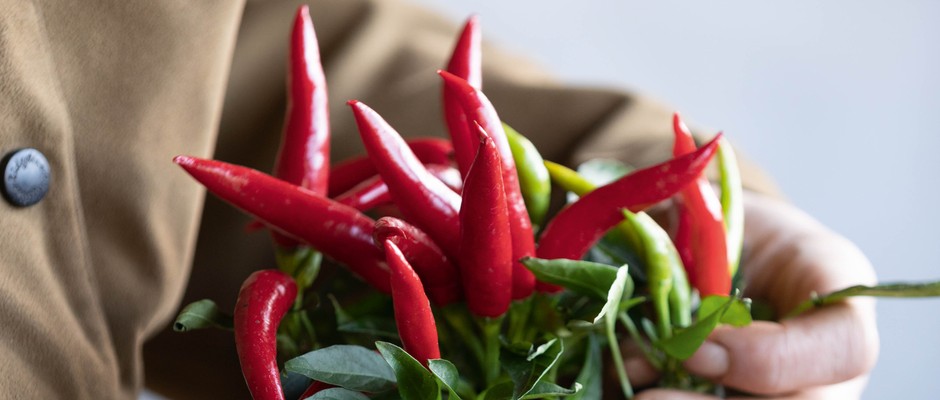
A colourful container display using chillies
Jenny Barnes walks us through this container display that prolongs the life of fresh chillies and brings colour and shape indoors
Head gardener Jenny Barnes offers up advice for planting a colourful display of chillies and shrubs.
I grow an array of peppers and chillies in my garden, which happily stand outside on a bench throughout summer. Towards the end of the season, the fruits would traditionally be picked and dried to use throughout the winter and the plants discarded, but I like to eat the chillies fresh for as long as possible and so bring the plants inside as soon as the nights start to get colder. I love to grow fruits in a range of colours and shapes, and this means my display is both practical and ornamental.
How to achieve the look
Container and composition
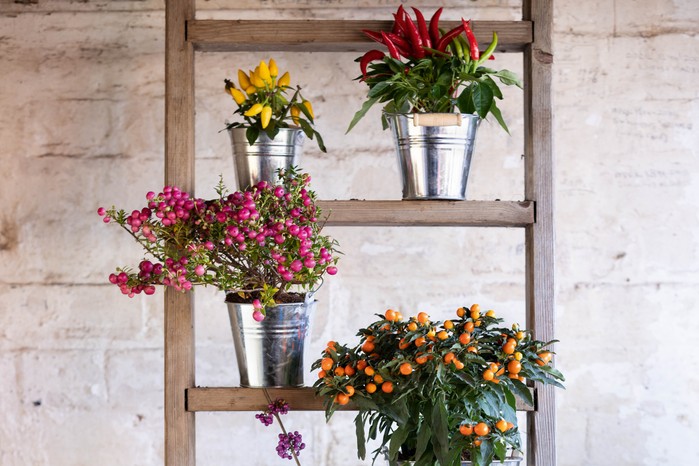
This wonderfully kitsch display was originally purely a practical decision to bring my chilli plants into the house, but it seemed such a shame not to make the most of them while they look so healthy. I scoured our plant nursery at work for further additions and added cultivars of Gaultheria mucronata, Callicarpa bodinieri and Solanum pseudoccapsicum, all of which are smothered in vibrant berries and fruits. Cotoneasters or hippophaes would also look great. To tie the arrangement together, I popped each plant into a separate galvanised bucket, all different sizes, but the same design, and stood these randomly on the steps of an old ladder, so my chillies are at the perfect picking height.
Cultivation and care
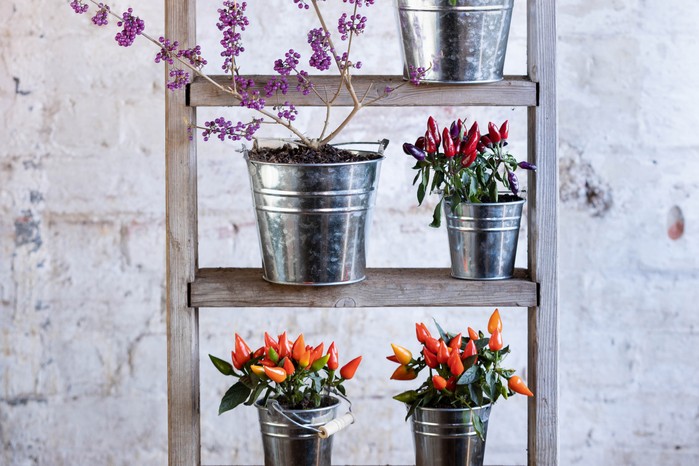
All these plants have been previously potted up into plastic pots using a growing medium to suit, so to save disturbing the roots of the established plants, I simply dropped the plastic pots into slightly larger galvanised buckets. If your buckets don’t have holes in the base, drop a few pebbles into the bottom of each one before adding the pot so that the plant is not sat in a pool of water should you accidentally overwater. Feed weekly with a specific chilli and pepper fertiliser to ensure optimum yield and harvest the chillies as you need. When the capsicums begin to look tatty, remove any remaining fruits, hang them to dry and compost the plant. You can refresh the display by dropping another plant into the empty bucket.
Plants
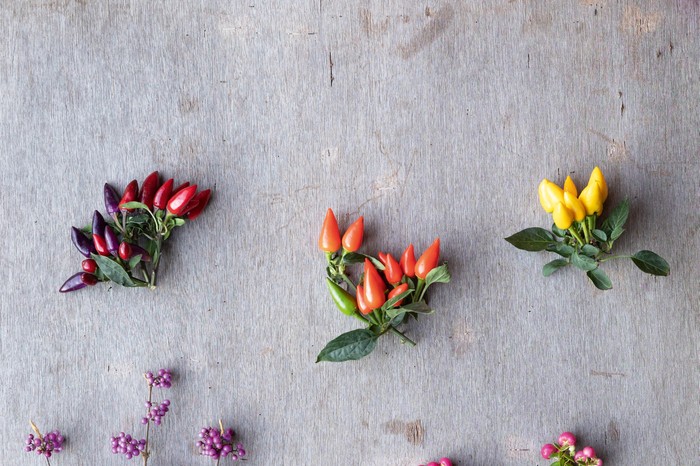
1 Capsicum annuum ‘Explosive Embers’ Hot chilli pepper with small, black fruits ripening to red. 20cm x 20cm. USDA 9a-11.
2 Capsicum annuum ‘Acapulco Orange’ Ornamental chilli with bright-orange fruits. 15cm x 20cm. USDA 9a-11.
3 Capsicum annuum ‘Salsa Yellow’ Small yellow fruits. 30cm x 20cm. USDA 9a-11.

4 Callicarpa bodinieri var. giraldii ‘Profusion’ Clusters of purple berries. 2.5m x 1.5m. AGM. RHS H6, USDA 6a-8b.
5 Gaultheria mucronata ‘Rosy Pink’ Compact, evergreen shrub with showy pink berries in autumn. 1m x 1m. RHS H6.
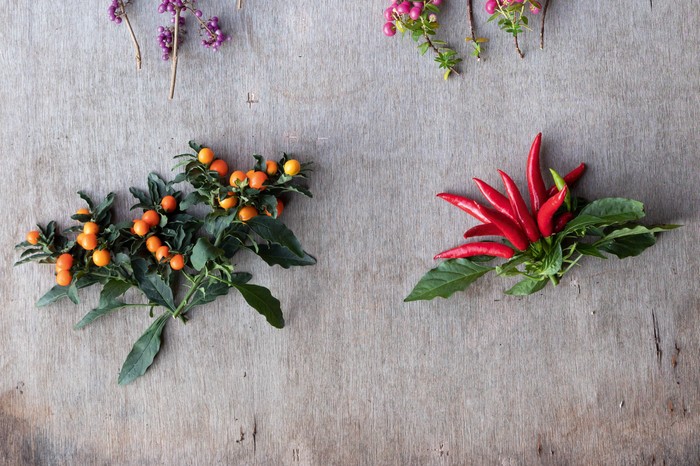
6 Solanum pseudocapsicum ‘Megaball’ Bushy shrub with spherical orange fruits. 50cm x 50cm. RHS H1C.
7 Capsicum annuum ‘Numex Cinco de Mayo’ Slim fruits ripening to red. 60cm x 20cm. USDA 9a-11.
Authors
Jenny Barnes is head gardener at Cottesbrooke Estate and is leading the way on new techniques of rose pruning and training.

Niwaki bundle worth £57 when you subscribe
Subscribe to Gardens Illustrated magazine and claim your Niwaki bundle worth £57
*UK only

Container Gardening Special Edition
The Gardens Illustrated Guide to Container Gardening.
In this special edition, discover colourful flower combinations and seasonal planting schemes for pots designed by leading plantspeople, and essential know-how for container gardening success. Just £9.99 inc UK p&pBy entering your details, you are agreeing to our terms and conditions and privacy policy. You can unsubscribe at any time.
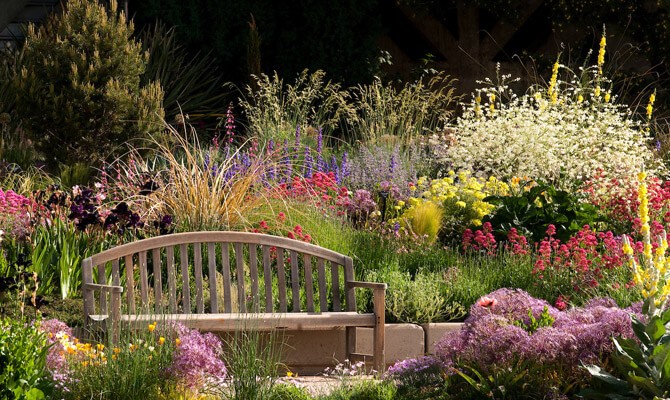
Gardens of the Globe
From botanical wonders in Australia to tranquil havens closer to home in Ireland, let this guide help you to discover some of the most glorious gardens around the world
By entering your details, you are agreeing to our terms and conditions and privacy policy. You can unsubscribe at any time.




